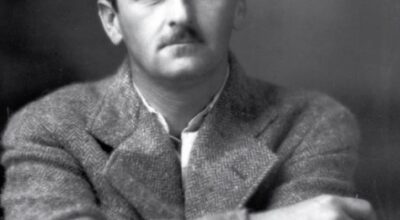After the war came the birth of a nation
Published 9:00 am Sunday, October 30, 2022

- Gene Hays, in Oxford, Miss. on Monday, August 14, 2017. (Photo/Bruce Newman)
By Gene Hays
Right after the Revolutionary War ended, it was easy to think the United States of America was born. The British surrendered at Yorktown, but it was a long, arduous process to transform our country to a fully formed nation. After many years of diplomatic talks, a peace treaty with Great Britain was established. Not even George Washington, the Revolutionary War hero could speed up the process. It took a long time for the British soldiers to leave American soil, taking loyalists and slaves with them back to England.
The real work began with much toil and debate. The United States Constitution was written after the country spent years languishing in economic hardship. Rebellions, disorganized states, and an ineffective Continental Congress threatened to destroy America. The Congress managed to act together and write the Constitution we still know today; it was a winding, complicated road to get there.
By the time the American Revolution ended, Prime Minister Lord North of England was exhausted by the tension between the two countries and couldn’t handle the position anymore. On July 11, 1782, British Royal Governor Sir James Wright and military personnel fled Georgia for South Carolina. The goal was to evacuate the colonies via the ocean. Several ships sailed for New York, while others went to Florida and the West Indies. Wright returned to London and perished there three years later. Peace talks later began in 1782 in Paris. Richard Oswald negotiated for the British while Benjamin Franklin, John Jay, and John Adams represented America. Eventually, the Articles of Peace were signed, which became the basis for the formal treaty several years later.
The agreement set up by John Jay, John Adams, Ben Franklin, and Richard Oswald brought both America and Britain closer to the conclusion of the conflict. In 1783, the Continental Congress officially ratified a preliminary version of a treaty. This allowed them to take a more fleshed-out version of the treaty to Paris, where representatives from the United States, Great Britain, Spain, and France gathered. The document that finally led to the formal end of the revolution, the Treaty of Paris, was the product of many months of negotiation and politics. As the result of the treaty’s final iteration, England had to recognize America as an independent nation, American fishermen were allowed to fish in Canadian waters, and England had to hand over territory between the Allegheny Mountains and the Mississippi River. America also agreed not to persecute Loyalists or block creditors who had debts to collect, and to restore property taken during the conflict.
The last British soldiers left New York in November 1783. The soldiers left with thousands of Loyalists and former slaves. The event became a holiday known as Evacuation Day. When the soldiers left, they nailed their flag to a pole and greased it so that it would be hard to remove. For years afterward, on each anniversary of the event, an American citizen would reenact the daring climb of John Van Arsdale, a sailor who scaled the pole and replaced the British flag with an American one. One month after the last British troops left the country, George Washington resigned as commander of the US Army in Annapolis, MD. It was seen as a patriotic act that showed his commitment to the country over his desire for personal power. After resigning, he went back home to his plantation in Mount Vernon, VA. Once again, Washington was called to duty during the country’s first presidential election. In 1777, the Articles of Confederation, needed to be revised after America won independence and become a functioning nation. The original articles did not have any power to affect change or regulate the nation. It even lacked the power to tax the people.
A constitution was needed, so a convention of delegates was called to Philadelphia in 1786 to craft a document. Over several months, delegates presented different plans for the federal government and compromises were reached. After a signing ceremony on September 17, the United States Constitution was finished. It took several years for the states to ratify the constitution. The first five states of Delaware, Pennsylvania, New Jersey, Georgia, and Connecticut quickly ratified the document. Several other states, however, had misgivings about the document because it failed to protect basic human rights such as freedom of speech and religion. Therefore, the first ten amendments, known as the Bill of Rights, were added to the document. In 1789, America held its first presidential election. The rules were a little different than they are today, as only white male property owners were allowed to vote and the man with the second-most votes would become vice president. George Washington won the election and was sworn into office on April 30, 1789.
Gene Hays is and Author and Historian with books available at Amazon.com and “Combined Action” published by the Marine Corps University, History Division.





